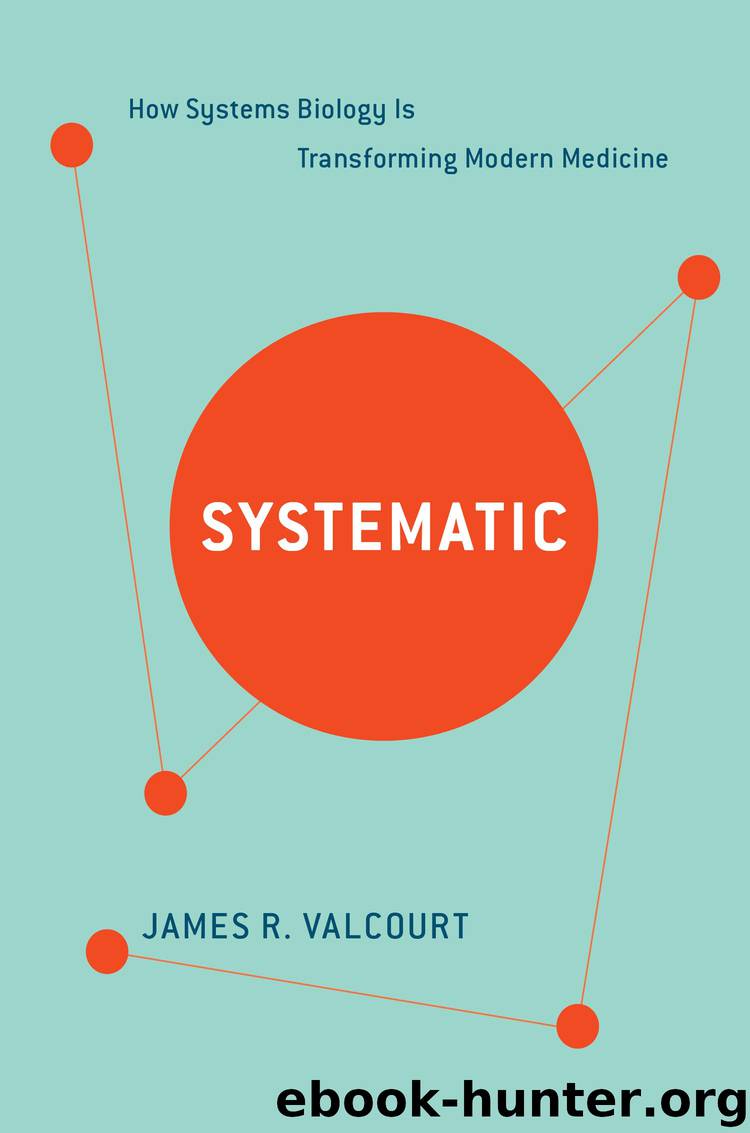Systematic by James R. Valcourt

Author:James R. Valcourt
Language: eng
Format: epub
ISBN: 9781632860316
Publisher: Bloomsbury Publishing
Published: 2017-01-11T16:00:00+00:00
The twin spirits of curiosity and competition have propelled scientists to make all kinds of novel systems by changing or adding to an organism’s genetic code. Some scientists have gone further still: instead of simply rewriting the existing genetic code and making new machines from known parts, Floyd Romesberg, a professor of chemistry at the Scripps Research Institute in California, and his colleagues added to the code itself.
Romesberg is fascinated by the fact that our DNA contains the information we need to build an organism. “I just can’t escape this idea that everything in life that we see today—all the diversity that we see—is encoded in a four letter genetic alphabet,” he marvels.
Think about it this way: this book is written in a code of sorts. English has 26 letters, plus punctuation and spaces, and these pages convey information by using those letters to form words. And much like a traditional alphabet, DNA’s A, T, G, and C bases together form a language, the genetic code, that carries most of the instructions for making a new copy of that organism and making it work. Inside genes that encode proteins, for example, each set of three letters is a “word”—an instruction to add a certain type of protein building block to the end of the growing protein chain.
This way of writing information has been fantastically successful; it is responsible for all of the diversity of life that we see today. Every blink, sprint, flex, and yawn that has ever been simply couldn’t have happened without the information carried in DNA. It is safe to say that the four bases of DNA are the most successful language ever invented. But despite their success, four bases just weren’t enough for Floyd Romesberg. He wanted six.
Expanding the genetic code could allow us to expand the parts list available to synthetic organisms. By modifying the genetic language, we could allow for the inclusion of some components that might not be useful or practical for living things to use, but might be of use to us. By expanding the list of possible words, we could reserve some of those words for totally novel protein building blocks.
Romesberg is especially interested in the possibility of making proteins with different protein building blocks for use in medical treatments. Using proteins to treat diseases has become much more popular recently among pharmaceutical drug companies, in part because they’re easy to make and we can actually use evolution in the lab to help design them: scientists make huge numbers of random modifications to the protein, then select those that perform best, perhaps by binding tightly to a target. Repeated cycles of this process can evolve proteins that bind to the target much better than the original protein did.
Proteins aren’t perfect, however: “A downside of protein therapeutics is that you’re stuck with what the protein has, and proteins are built, more or less, from 20 amino acids,” Romesberg says. But if you had extra words, you could hypothetically add pretty much anything into the protein chain.
Download
This site does not store any files on its server. We only index and link to content provided by other sites. Please contact the content providers to delete copyright contents if any and email us, we'll remove relevant links or contents immediately.
| Anatomy | Animals |
| Bacteriology | Biochemistry |
| Bioelectricity | Bioinformatics |
| Biology | Biophysics |
| Biotechnology | Botany |
| Ecology | Genetics |
| Paleontology | Plants |
| Taxonomic Classification | Zoology |
Sapiens: A Brief History of Humankind by Yuval Noah Harari(14242)
The Tidewater Tales by John Barth(12608)
Mastermind: How to Think Like Sherlock Holmes by Maria Konnikova(7221)
Do No Harm Stories of Life, Death and Brain Surgery by Henry Marsh(6887)
The Thirst by Nesbo Jo(6825)
Why We Sleep: Unlocking the Power of Sleep and Dreams by Matthew Walker(6618)
Life 3.0: Being Human in the Age of Artificial Intelligence by Tegmark Max(5472)
Sapiens by Yuval Noah Harari(5293)
The Longevity Diet by Valter Longo(5017)
The Body: A Guide for Occupants by Bill Bryson(4972)
The Rules Do Not Apply by Ariel Levy(4842)
The Immortal Life of Henrietta Lacks by Rebecca Skloot(4522)
Animal Frequency by Melissa Alvarez(4394)
Why We Sleep by Matthew Walker(4358)
The Hacking of the American Mind by Robert H. Lustig(4318)
Yoga Anatomy by Kaminoff Leslie(4303)
All Creatures Great and Small by James Herriot(4228)
Double Down (Diary of a Wimpy Kid Book 11) by Jeff Kinney(4204)
Barron's AP Biology by Goldberg M.S. Deborah T(4095)
